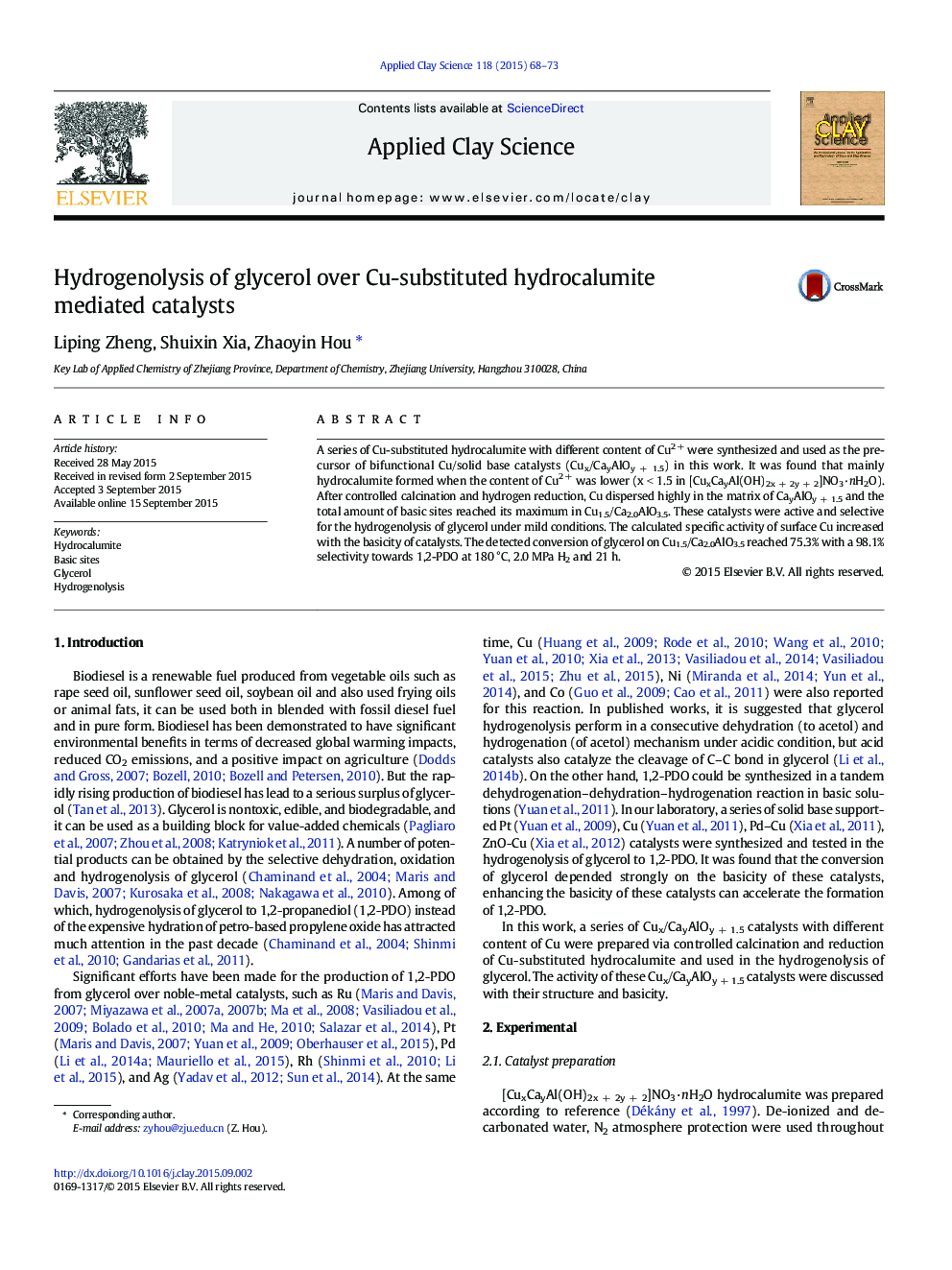| Article ID | Journal | Published Year | Pages | File Type |
|---|---|---|---|---|
| 1694249 | Applied Clay Science | 2015 | 6 Pages |
•Wellcrystallized hydrocalumite [CuxCayAl(OH)2x + 2y + 2]NO3·nH2O (x < 1.5) was synthesized.•Cu dispersed highly in the matrix of calcined hydrocalumite.•Cu-substituted hydrocalumite mediated catalyst is active for the hydrogenolysis of glycerol.•The specific activity of surface Cu increased with the basicity of catalysts.
A series of Cu-substituted hydrocalumite with different content of Cu2 + were synthesized and used as the precursor of bifunctional Cu/solid base catalysts (Cux/CayAlOy + 1.5) in this work. It was found that mainly hydrocalumite formed when the content of Cu2 + was lower (x < 1.5 in [CuxCayAl(OH)2x + 2y + 2]NO3·nH2O). After controlled calcination and hydrogen reduction, Cu dispersed highly in the matrix of CayAlOy + 1.5 and the total amount of basic sites reached its maximum in Cu1.5/Ca2.0AlO3.5. These catalysts were active and selective for the hydrogenolysis of glycerol under mild conditions. The calculated specific activity of surface Cu increased with the basicity of catalysts. The detected conversion of glycerol on Cu1.5/Ca2.0AlO3.5 reached 75.3% with a 98.1% selectivity towards 1,2-PDO at 180 °C, 2.0 MPa H2 and 21 h.
Graphical abstractFigure optionsDownload full-size imageDownload as PowerPoint slide
